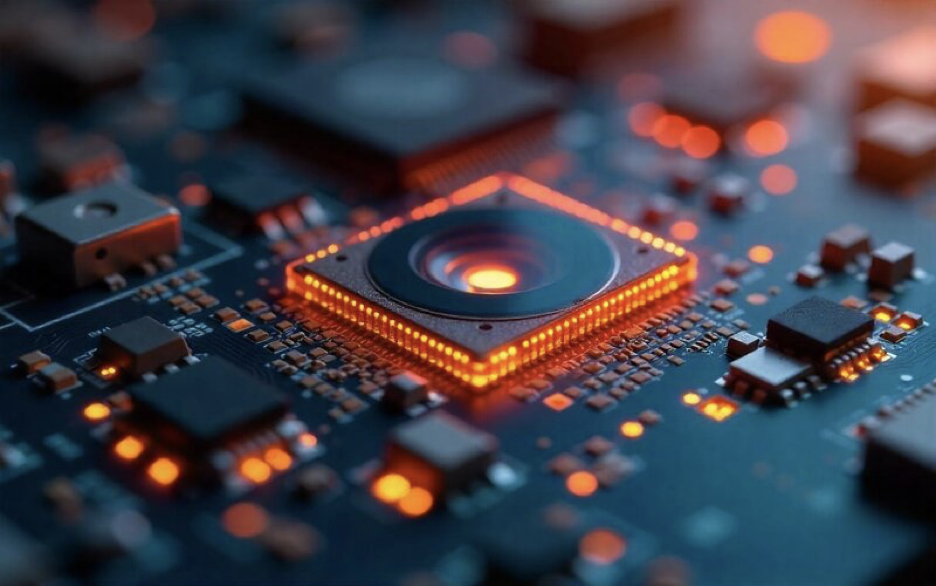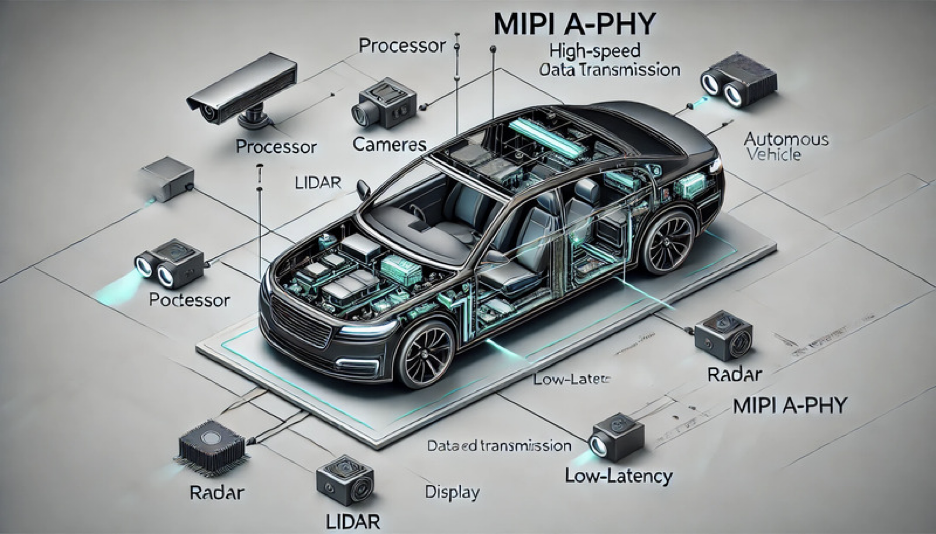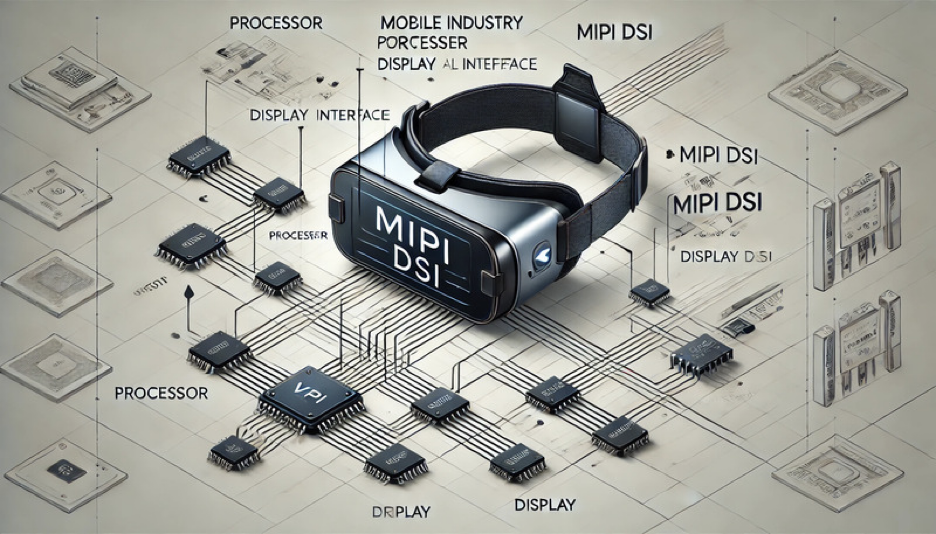The acronym for the Mobile Industry Processor Interface is MIPI. The MIPI defines the industry standard and specifications for mobile devices’ hardware and software interfaces such as Laptops, tablets, mobile phones, and hybrid devices. These specifications ensure communication between components such as processors, cameras, and displays.
MIPI interfaces are essential for connecting various electronic components in mobile devices, automotive, and IoT industries. This article will teach you about MIPI, its history, and its applications. Let’s begin.

Article Directory:
- What is MIPI?
- History of MIPI interfaces
- Types of MIPI Interface Standard
- What Are the Advantages of the MIPI Interface?
- What are the Applications of the MIPI Interface?
- What are the Benefits of MIPI for high-resolution Displays?
- FAQs
- Bottom Line On What is MIPI
History of MIPI interfaces
MIPI Alliance was founded in 2003 by renowned technology companies like Nokia, Samsung, and Texas Instruments. The alliance aimed to fix a standard for mobile device interfaces. Now it has a huge members of 375 + organizations focusing on industries like mobile devices, automotive, IoT, and augmented reality(AR).
The MIPI interfaces have a huge strategic role in the Internet of Things ( IoT), connected cars, and 5G mobile devices.

Types of MIPI Interface Standard
MIPI is a set of specifications for the pattern of mobile devices. It defines the protocol’s physical layer standards for interconnecting internal mobile device components. It has three unique physical(PHY) standards:
- MIPI D-PHY,
- MIPI M-PHY,
- And MIPI C-PHY.
What is MIPI D-PHY: MIPI D-PHY is a physical layer standard for connecting displays and cameras to baseband processors of mobile and portable devices. D-PHY is a synchronous link that works in either forwarded clocks or embedded modes.
Uses of MIPI D-PHY: MIPI D-PHY has many applications such as:
- Smartphones
- Tablets
- Drones
- Surveillance cameras
- Robots
- In-car infotainment and dashboard displays
- Automotive camera and radar sensors
Features of MIPI D-PHY: The following are the key features of MIPI D-PHY:
Scalability: D-PHY is scalable in single or multiple data lanes.
Flexibility: It is switchable between real-time high-speed differential mode and low-power single-ended mode.
Point-to-point Connectivity: D-PHY can connect between a host and device like a master and slave.
Forwarded Clock: This interface has a dedicated clock lane for the clock-forwarded synchronous link.
MIPI Protocols Supportability: D-PHY is a popular layer standard for the Display Serial Interface(DSI) and Camera Serial Interface(CSI-2).
What is MIPI M-PHY?
The M-PHY physical(PHY) layer interface is used for serial communication in mobile systems. It is designed for fast communication channels and flash memory-based storage systems.
Applications of M-PHY: This standard has wide applications connecting smartphones, PCS, automobiles, and portable components. It also has applications in chip-to-chip interprocessor communications(IPC).
Features of MIPI M-PHY: The key features of MIPI M-PHY interface are-
High Bandwidth: M-PHY has high bandwidth. The maximum data rate of the latest version of M-PHY is 23.32 gigabytes per second(Gbps) per lane.
Low Power: It has a power-saving setting that uses burst operation to toggle between the power-saving state and data transmission mode.
Low EMI(Electromagnetic Interface): M-PHY interface standard has a low electromagnetic interface. Signal slew rate and amplitude are used to reduce the EMI.
Robust Operation: This interface operates in sophisticated power-efficient clock circuitry and a clock recovery mechanism. Thus it maintains robust operation.
High-speed start-up: M-PHY ensures fast device startup by reducing latency during the flash memory access power-up.
Eye Monitoring: M-PHY monitors signal health to increase the debug functionality.
Protocol error detection: It can monitor and notify the testbench of all timing and protocol errors.
What is MIPI C-PHY?
It is a similar physical layer to the D-PHY. MIPI C-PHY is designed to optimize cost and performance. It is also used to connect the display and camera with the baseband processor of mobile devices.
Features of MIPI C-PHY: It has high throughput, low latency transitions, and minimal interconnected signals. The MIPI C-PHY interface has a fast bus turnaround and an alternate low-power feature.

What Are the Advantages of the MIPI Interface?
The high-speed MIPI display interface has many benefits. It is popularly used for laptops, tablets, smartphones, and automobiles. Designers use the DSI(Display Serial Interface) for the TFT display connection with the application processors. They also use SoCs(System-on-chip) for mobile applications such as smartphones.
Here are the benefits of MIPI:
1. Hi-Speed Data Transfer:
High Data Rates: MIPI interfaces have high-speed data transfer rates. It can transfer huge amounts of data within a short time. This high data rate is crucial for high-resolution cameras and displays.
Low Latency: It has minimum latency to ensure smooth and responsive data transfer between different components.
2. Power Efficiency:
Low Power Consumption: MIPI is an energy-efficient interface protocol. It can reduce the overall power consumption which is very important for battery-powered devices like tablets and smartphones.
Flexible Power Mode: The interface has various power modes to optimize energy consumption based on their running activities.
3. Adjustability:
Adjustable Data Rates: The MIPI interface is scalable to support data rates. This scalability has made them suitable for multiple applications.
Flexible Configuration: It allows flexible data lanes and clock frequencies which enables customization for specific needs.
4. Low Electromagnetic Interference (EMI):
MIPI can reduce electromagnetic interference to ensure data transmission and reduce potential interference with other components.
5. Compact Design:
MIPI interfaces require fewer physical connections. It helps to design smaller and more compact devices.
6. Interoperability and Standardization:
It is a standardized interface compatible with different components from multiple manufacturers.
7. Reduced Cable Complexity:
MIPI interfaces use fewer cables to simplify device assembly and minimize cost.
8. Maximum Signal Integrity:
It uses advanced signal techniques for signal integrity over longer distances.
9. Multiple Data Supporting Capability:
MIPI supports data types such as video, audio, and sensor data.
However, we learned what is MIPI, its interfaces, and its advantages. Let’s explore its applications across various sectors.

What are the Applications of the MIPI Interface?
MIPI is the essential interface for modern devices and automobiles. The following are the major sectors where MIPI is used.
Mobile Devices and Consumer Electronics: The MIPI interface standard is essential in designing Smartphones and Tablets. It enables high-speed cameras, vibrant displays, and efficient batteries.
Automotive Industry: It helps automotive engineers to adopt scalable and cost-effective solutions. The MIPI A-PHY and other standards support ADAS in-car infotainment and safety features.
Internet of Things(IoT): MIPI interfaces connect IoT sensors to processors. This connection enables home appliances, industrial automation, and wearable health monitors.
Augmented Reality(AR) and Virtual Reality(VR): The AR and VR headsets use MIPI DSI for high-resolution displays and CSI-2 for the camera-based tracking system.
Medical Devices: MIPI interfaces have a potential contribution to modern medical equipment. It ensures precise data transfer from the medical imaging system to the surgical robots.
Industrial Automation: MIPI standards have impactful applications in industrial automation. It facilitates machine vision systems in robotics by utilizing MIPI CSI-2. The MIPI interface also guarantees dependable communication among various industrial sensors.
Smart Home Technology: Advanced smart home devices extensively relied on the MIPI standards. This interface maintains the integration of home appliances by connecting cameras, motion sensors, and central control units.
What are the Benefits of MIPI for high-resolution Displays?
The MIPI DSI standard has many advantages for high-resolution display technology. It enables 4K and 8K resolutions for mobile devices like smartphones and tablets. The MIPI interface enhances the color accuracy of wearables like smartwatches and AR glasses.
Moreover, MIPI DSI offers an immersive viewing experience for the different AR and VR display systems.
FAQs
What is MIPI short for?
MIPI stands for Mobile Industry Processor Interface. It was created as a standard for mobile device displays and cameras.
What are MIPI signals?
The MIPI is a high-speed differential protocol for cell phones. The MIPI DSI(Display Serial Interface) was developed and used for display communication.
Bottom Line On What is MIPI:
Technology has made our lives easy, especially modern gadgets and appliances. The MIPI interfaces are the backbone of those gadgets and electronic systems. Mobile devices and smart cars cannot be designed except using this interface. MIPI provides continuous high-performance, energy-efficient, and cost-saving innovations for individuals.
However, this was our arrangement on ‘what is MIPI’, we hope you enjoy reading the article and stay with Kingtechlcd.
